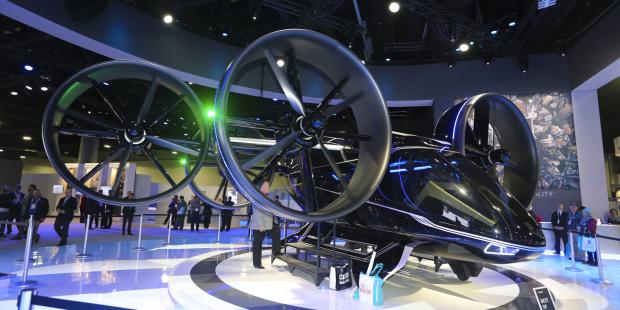
Breaking News
6.8 SPC vs. 300 Blackout: Powering Up the AR Platform
 Autism Study By McCullough Foundation Begins New Era of Free Scientific Inquiry
Autism Study By McCullough Foundation Begins New Era of Free Scientific Inquiry
 REVOLUTION DAY 8: Libertarians JOIN The Revolution
REVOLUTION DAY 8: Libertarians JOIN The Revolution
 US Government and Westinghouse $80bn Nuclear Reactor Deal
US Government and Westinghouse $80bn Nuclear Reactor Deal
Top Tech News
 Graphene Dream Becomes a Reality as Miracle Material Enters Production for Better Chips, Batteries
Graphene Dream Becomes a Reality as Miracle Material Enters Production for Better Chips, Batteries
 Virtual Fencing May Allow Thousands More Cattle to Be Ranched on Land Rather Than in Barns
Virtual Fencing May Allow Thousands More Cattle to Be Ranched on Land Rather Than in Barns
 Prominent Personalities Sign Letter Seeking Ban On 'Development Of Superintelligence'
Prominent Personalities Sign Letter Seeking Ban On 'Development Of Superintelligence'
 Why 'Mirror Life' Is Causing Some Genetic Scientists To Freak Out
Why 'Mirror Life' Is Causing Some Genetic Scientists To Freak Out
 Retina e-paper promises screens 'visually indistinguishable from reality'
Retina e-paper promises screens 'visually indistinguishable from reality'
 Scientists baffled as interstellar visitor appears to reverse thrust before vanishing behind the sun
Scientists baffled as interstellar visitor appears to reverse thrust before vanishing behind the sun
 Future of Satellite of Direct to Cellphone
Future of Satellite of Direct to Cellphone
 Amazon goes nuclear with new modular reactor plant
Amazon goes nuclear with new modular reactor plant
 China Is Making 800-Mile EV Batteries. Here's Why America Can't Have Them
China Is Making 800-Mile EV Batteries. Here's Why America Can't Have Them
New battery technology to take electric VTOL vehicles off the ground

According to the Pennsylvania State University (Penn State) researchers, batteries for eVTOL vehicles have special requirements. Given these requirements, the scientists say the batteries will be built with these specific specifications in mind.
The Penn State researchers reported their findings alongside prototype eVTOL battery designs in a June 7 study published in Joule. They noted that eVTOL vehicles "have attracted considerable interest as a disruptive technology to transform future transportation systems." However, the researchers acknowledged that the batteries' unique operating profiles and requirements pose hurdles to be overcome by future battery technologies.
Study author Chao-Yang Wang said: "I think flying cars have the potential to eliminate a lot of time, increase productivity and open the sky corridors to transportation. Commercially, I would expect these vehicles to make 15 trips twice a day, during rush hour, to justify the cost of the vehicles. The first use will probably be from a city to an airport, carrying three to four people about 50 miles."
But Wang acknowledged that creating batteries to match the needs of eVTOL vehicles is not a walk in the park. "Batteries for flying cars need very high energy density so that [they] can stay in the air. [They] also need very high power during takeoff and landing. It requires a lot of power to go vertically up and down," he said.
The study author also noted that eVTOL vehicle batteries must have the ability to be recharged rapidly to match vehicles' frequent takeoffs and landings. A battery typically charges easily when empty, but charging takes longer and becomes more difficult as it stores more energy. Heating the battery, however, keeps the battery charging time short.

 China Innovates: Transforming Sand into Paper
China Innovates: Transforming Sand into Paper

